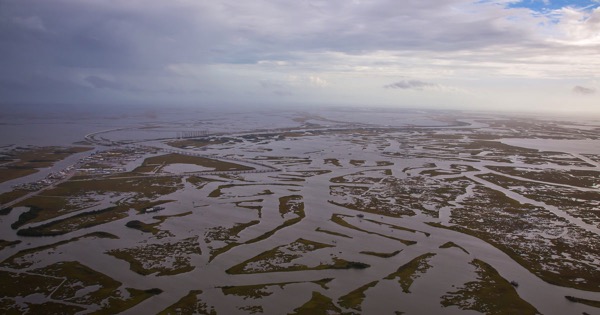Coastal Louisiana Is Sinking Faster Than Expected
The rich wetlands of southern Louisiana are sinking faster than previously thought, new data reveals, worsening a decades-long ecological disaster that authorities are struggling to reverse.
“What previous studies have called the worst case is the case that right now is the average,” said Jaap Nienhuis, a geologist at Tulane University in New Orleans.
Nienhuis and his colleagues at Tulane have found the coast is subsiding on average about 9 mm (1/3 inch) a year. Some areas, such as those near the mouth of the Mississippi and the Atchafalaya River delta to the west, are settling closer to 12 mm a year.
Periodic flooding of the Mississippi River used to dump fresh soil into those marshes, bolstering the wetlands. But the levees that now prevent those floods keep that soil straitjacketed in the river. The area is also home to a major oil and natural gas industry, and canals cut through the marshes allowed salt water to kill grasses that held the land in place.
As a result, coastal Louisiana has been losing a roughly Manhattan-sized chunk every year to a combination of sea-level rise, erosion, and subsidence. That threatens a rich ecosystem that provides more than 1 billion pounds of seafood a year and provides a buffer when hurricanes spin onto shore from the Gulf of Mexico.

No comments:
Post a Comment